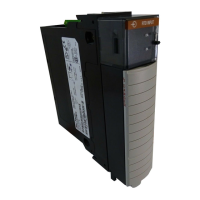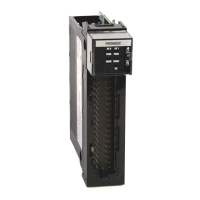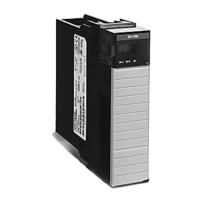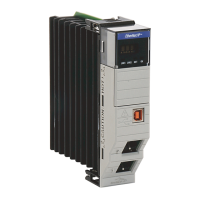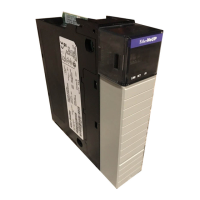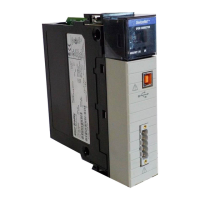Rockwell Automation Publication 1756-UM058G-EN-P - November 2012 65
Common Module Features Chapter 3
Fault and Status Reporting
between Output Modules
and Controllers
ControlLogix digital output modules multicast fault and status data to any
owner-controller or listening controller. Like input modules, output modules
maintain a module-fault word, the highest level of fault reporting. However,
some output modules use additional words to indicate fault conditions.
The table lists the fault words and the associated tags that can be examined in
program logic to indicate when a fault has occurred for a standard output
module.
All words are 32-bit, although only the number of bits appropriate for each
module’s density are used. For example, the 1756-OB8 module has a module-
fault word of 32 bits. But, because this is a eight-point module, only the first eight
bits (0…7) are used in the module-fault word.
Fault bits in the fuse blown word and field power loss word are logically entered
into the module-fault word. Depending on the module type, a bit set in the
module-fault word can mean multiple things, as indicated in the following table.
Table 6 - Fault Words on Output Modules
Word Tag Name Description
Module-fault Fault Provides fault summary reporting. Available on all digital output
modules.
Fuse blown FuseBlown Indicates a point/group fuse blown on the module. Available only on
1756-OA16, 1756-OA8D, 1756-OA8E, 1756-OB16D, 1756-OB16E,
1756-OB16EIF, 1756-OB8EI, 1756-OV16E, and 1756-OV32E modules.
For more information, see Electronic Fusing
on page 57.
Field power loss FieldPwrLoss Indicates a loss of field power to a point on the module. Available on
the 1756-OA8E module only. For more information, see Field Power
Loss Detection on page 60.
Table 7 - Bits Set in Module-fault Word
Condition Bits Set
Communication fault All 32 bits are set to 1, regardless of the module’s density.
Fuse blown
Only the bit affected is set to 1.
Field power loss
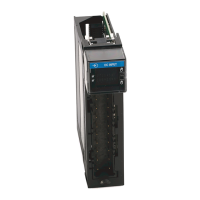
